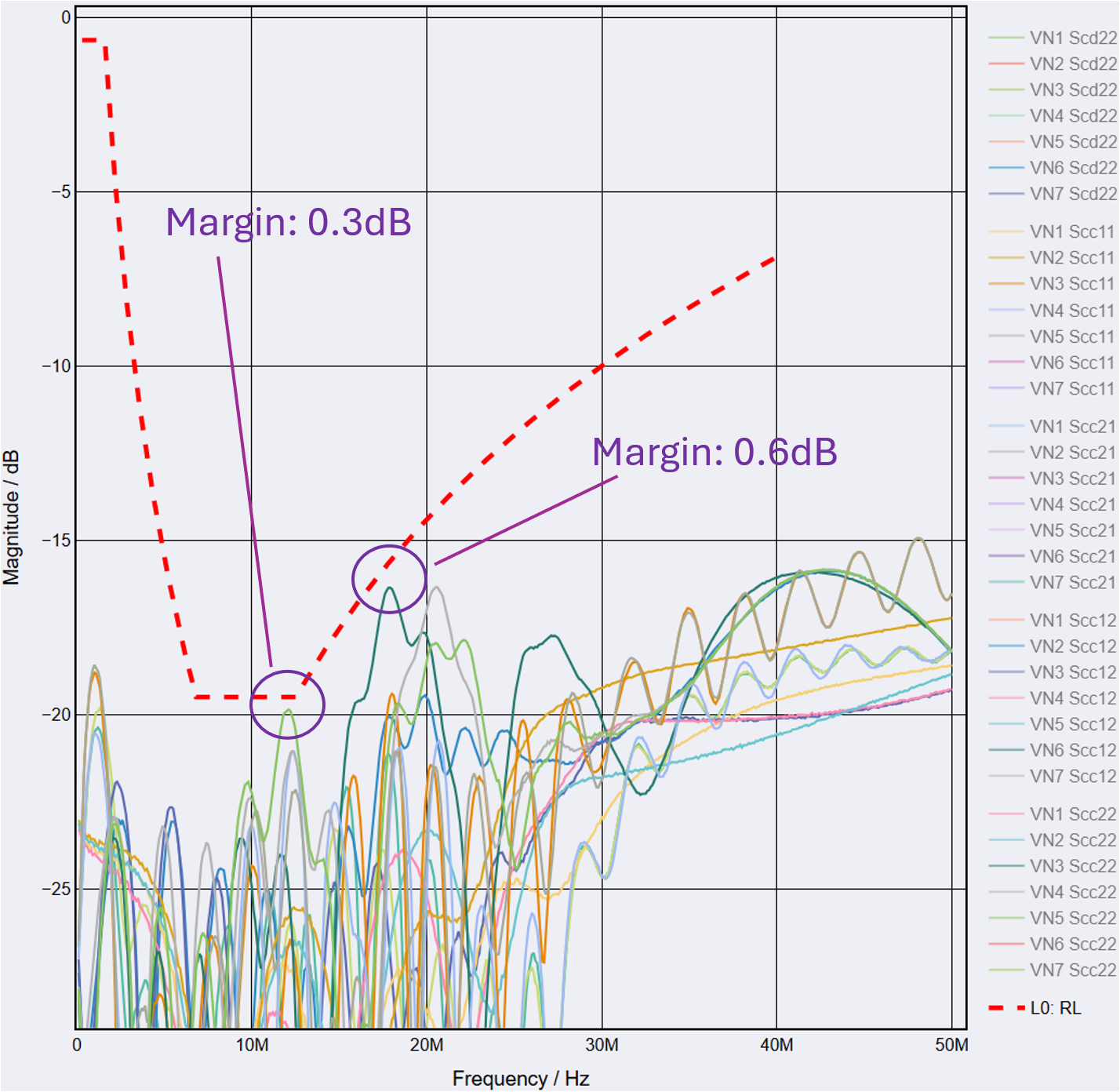Repeating because stephan’s footer blocked our conversation from the reflector)…
From: George Zimmerman
Sent: Tuesday, January 21, 2025 5:06 AM
To: Stephan Schreiner <Stephan.Schreiner@xxxxxxxxxxxxxxx>
Cc: STDS-802-3-SPMD@xxxxxxxxxxxxxxxxx; Michael Paul <Michael.Paul@xxxxxxxxxx>; Michael Paul <Michael.Paul@xxxxxxxxxx>
Subject: Re: Mixing segment RL (317 & 296) and TCI RL (298)
Stephan, I would not be happy with 0.3 DB margin if I were you. However, I think we can work with this, because I think what we probably would want to do is change the curve slightly once we understand whether we can actually count on the
shape going deeper first, and then coming up from a notch. I don’t think the right solution to create margin at a higher frequency is to give up the performance by artificially raising the floor at lower frequencies.
George Zimmerman, Ph.D.
President & Principal
CME Consulting, Inc.
Experts in Advanced PHYsical Communications
310-920-3860
On Jan 21, 2025, at 4:32 AM, Schreiner, Stephan <Stephan.Schreiner@xxxxxxxxxxxxxxx> wrote:
Hi George,
thanks for your proposal.
I inserted your proposal (19.5dB min) into the graph of the measurements.
The measurements are below that line – the margin is only 0.3dB (which is not much – the 1dB I had in the fit will not make a big change either).
Does anybody have some thoughts on the margin?
I am in favour of this “simpler” curve – It is much less error prone to construct.
Regards,
Stephan

Von: George Zimmerman <george@xxxxxxxxxxxxxxxxxxxx>
Gesendet: Dienstag, 21. Januar 2025 05:41
An: STDS-802-3-SPMD@xxxxxxxxxxxxxxxxx
Cc: Paul, Michael <Michael.Paul@xxxxxxxxxx>; Schreiner, Stephan <Stephan.Schreiner@xxxxxxxxxxxxxxx>
Betreff: [EXTERNAL] Mixing segment RL (317 & 296) and TCI RL (298)
|
EXTERNAL E-MAIL This e-mail is from a
source outside of the Rosenberger Group. Do not open any links or attachments unless you are sure it is from a trusted sender. |
Michael & Stephan –
I checked the RL losses, and I believe the following will resolve the comments on the RL (mixing segment = 317 & 296 ; MPI loading is 298)
<image002.png>
For the overall mixing segment, I used the form that Stephan had, and just ran it down to a new floor that would show minimal loss (0.1 dB), keeping the upper corner at 12.5 MHz:
The equation I come up with is:
|
19.5-MAX(0,25*log10(F/12.5) for F > 6.8 MHz |
F>cutoff |
||||
|
Max(0.65,.65+30*log10(F/1.6) for 0.3 < F < 6.8 MHz |
.3<F<cutoff |
||||
This gives a loss in SINR of 0.1 dB. If you can go all the way down to 20 dB, you can reduce the loss to zero. (preferred). In this case the corner frequency is 7.07 MHz
If we want to modify the TCI RL for unit loads, what you want to do is the following:
In clause 188.9.2, insert a new first sentence “When the TCI is also an MPI, the return loss of the TCI complies with the return loss of 189.6.1.” Change the beginning of the following sentence to read, “When the TCI is not an MPI, the
TCI return loss at TC1 and TC2 shall meet the values determined using Equation (188–7) with the other trunk TC (i.e., TC2 or TC1, respectively) terminated in 100 /OHMS with a DTE or simulated DTE load present at the TCI.” (where /OHMS is the symbol for Ohms)
In clause 189.6, insert new section 189.6.1 MPI Return Loss with text:
“When the MPI is a TCI, the TCI return loss at TC1 and TC2 shall meet the values determined using Equation (188–7) with the other trunk TC (i.e., TC2 or TC1, respectively) terminated in 100 /OHMS with a DTE or simulated DTE load present
at the TCI, plus 10*log10(N_load), where N_load is the maximum number of unit loads for the DTE. (where /OHMS is the symbol for Ohms)”
This should give reasonable losses, since the number of unit loads on a mixing segment is limited to 16.
A one-unit-load MPI will be the same as a clause 188 unpowered TCI.
What I haven’t done is resimulate the mixing segment RL for cases where one or more of the unit loads are greater than 1. I suspect we can leave that for the next time.
George Zimmerman, Ph.D.
President & Principal
CME Consulting, Inc.
Experts in Advanced PHYsical Communications
310-920-3860
To unsubscribe from the STDS-802-3-SPMD list, click the following link: https://listserv.ieee.org/cgi-bin/wa?SUBED1=STDS-802-3-SPMD&A=1